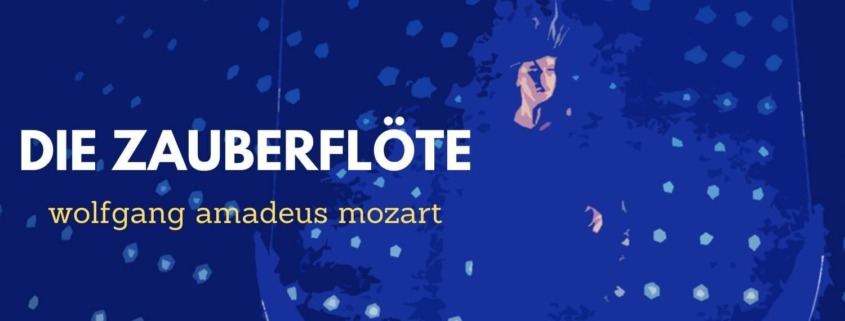DER HÖLLE RACHE – the revenge aria from the opera die Zauberflöte (Queen of the night)
The online opera guide of Mozart’s aria DER HÖLLE RACHE
Read Interesting facts and hear great YouTube Videos about the famous Aria “DER HÖLLE RACHE”.
If you want to hear more about the opera THE MAGIC FLUTE , click on the link to the opera portrait
The aria – synopsis and background
Synopsis: The Queen of the Night learns that Tamino is trying to join Sarastro’s Temple instead of freeing her daughter Pamina from his hands. She is outraged. She tells Pamina that her deceased husband has handed over the Sun Circle to Sarastro and he thus received power. She orders her to kill Sarastro and to steal the sun circle from him.
This aria is often referred to as “Revenge aria”. It is peppered with murderous difficulties and leads the voice to the outermost regions of the voice range. The high note F is the highest note set in the opera repertoire. Few sopranos can sing this aria regularly without damaging their voices. An additional difficulty is that the coloraturas are difficult to sing in high registers.
Mozart set the aria in D minor, which is reserved in his works only for extremely dramatic scenes (e.g. in Mozart’s Requiem). The orchestral introduction consists only of a forte d minor chord of the whole orchestra, which defines the gloomy atmosphere from the very beginning. In the excited recitative-like beginning, the queen gets straight to the point: her daughter is to kill Sarastro. Soon in a fever of excitement her voice rushes in a first staccato-chain repeating a high C. Since this represents a seventh in the d minor structure, this gives the queen a restless note:
Mozart increases the level of madness, and she reaches the high F in virtuoso leaps:
Soon the next difficulty awaits the singer: the triplets are set very high and must not only fit perfectly in intonation, but also rhythmically:
Mozart offers us another surprise with the passage „hört, hört, hört!“ The notes of the first two “hört” form the beginning of a triad. On the third “hört” Mozart composed a B instead of the expected A, which makes the listener shudder:
The end is again a recitative-like passage marked by hate.
The singer of the premiere was Mozart’s sister-in-law Josepha Hofer. It is said that Hofer had a particularly agile voice with a pronounced high register. So Mozart wrote her this aria in her throat.
The aria – the text of DER HÖLLE RACHE
Der Hölle Rache kocht in meinem Herzen,
Tod und Verzweiflung flammet um mich her!
Fühlt nicht durch dich Sarastro Todesschmerzen,
So bist du meine Tochter nimmermehr.
Verstoßen sei auf ewig,
Verlassen sei auf ewig,
Zertrümmert sei’n auf ewig
Alle Bande der Natur,
Wenn nicht durch dich Sarastro wird erblassen!
Hört, Rachegötter, hört der Mutter Schwur!
The vengeance of Hell boils in my heart,
Death and despair flame about me!
If Sarastro does not through you feel
The pain of death,
Then you will be my daughter nevermore.
Disowned may you be forever,
Abandoned may you be forever,
Destroyed be forever
All the bonds of nature,
If not through you
Sarastro becomes pale!
Hear, Gods of Revenge,
Hear a mother’s oath!
Written for a “dramatic coloratura soprano”
The role of Königin der Nacht is written for a dramatic coloratura soprano. The dramatic coloratura soprano must have both coloratura ability and the ability to master dramatic expression with a larger vocal volume.
Famous interpretations of DER HÖLLE RACHE
We’ll start with perhaps the best version, the interpretation by Edda Moser from the Sawallisch recording. Here the queen is seething with rage. The Staccatos blaze up dramatically like no other interpretation. In an interview with the magazine “Fono Forum”, Edda Moser told an anecdote about how this flaming interpretation came about:
“I had been engaged as Queen of the Night for this recording. I then came to Munich, when producer Helmut Storjohann told me: ‘There is a little problem: Mrs. Sawallisch (the conductor’s wife) doesn’t want you to be the queen. Then I asked what Mrs. Sawallisch had to do with the recording? Then Helmut Storjohann, whom I adore, said: ‘If the Edda doesn’t sing the Queen of the Night, the whole production will be cancelled!’ Sawallisch then swallowed the pill and asked me at the first session a little cool if I wanted to start with the first or second aria. I said I’d like to take the second one. And in the anger I had because they didn’t want me, I put all the anger in the aria and sang it through in a take.”
Der Hölle Rache (Revenge aria) (1) – Moser
The (possibly) best of her generation.
Der Hölle Rache (Revenge aria) (2) – Damrau
Lucia Popp’s reaches the high notes with ease and, despite the effort, she remains light yet expressive.
Der Hölle Rache (Revenge aria) (3) – Popp
Gruberova made her debut in this role 1974 at the age of 24 at the Vienna State Opera and sang the same year in Salzburg under Herbert von Karajan. She has sung this role in an incredible two hundred performances. This role earned her the nickname “Queen of Coloratura”. She sings the queen passionately and yet precisely.
Der Hölle Rache (Revenge aria) (4) – Gruberova
Wilma Lipp set the standard in the fifties. Crystal clear and dramatic.
Der Hölle Rache (Revenge aria) (5) – Lipp
Sutherland also sang the queen. Coloraturas were her speciality. The pitch, however, was transposed downwards.
Der Hölle Rache (Revenge aria) (6) – Sutherland
A sweeping queen of Patricia Petitbon.
Der Hölle Rache (Revenge aria) (7) – Petitbon
And as last Natalie Dessay at breathtaking speed, which increases the madness even more.
Der Hölle Rache (Revenge aria) (8) – Dessay
Peter Lutz, opera-inside, the online opera guide to the Aria “DER HÖLLE RACHE” from the opera Die Zauberflöte.





Leave a Reply
Want to join the discussion?Feel free to contribute!